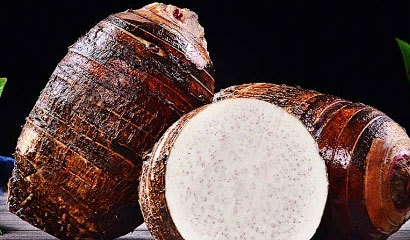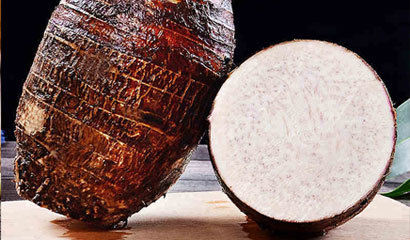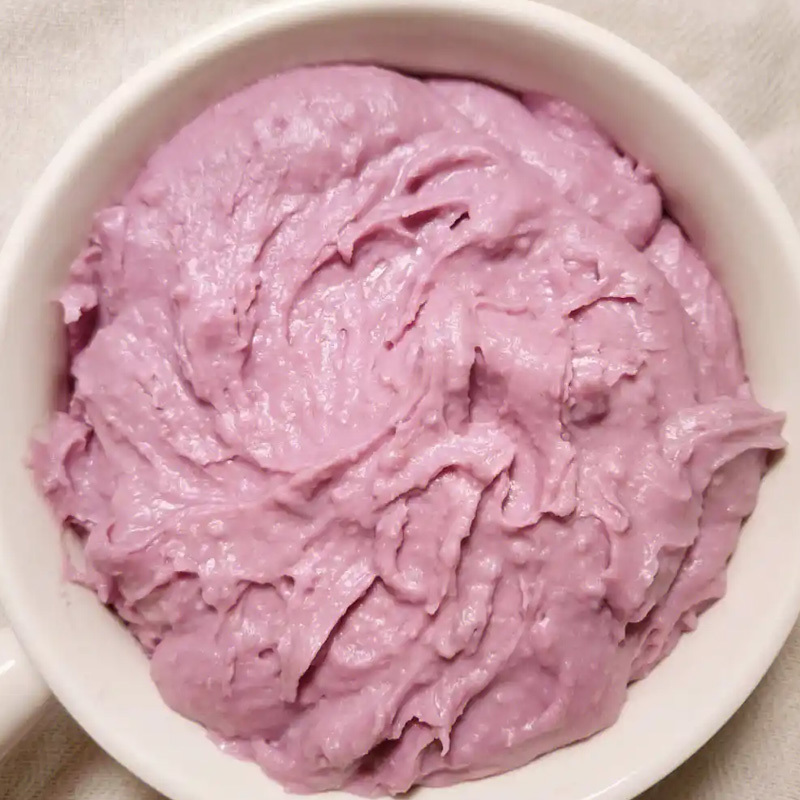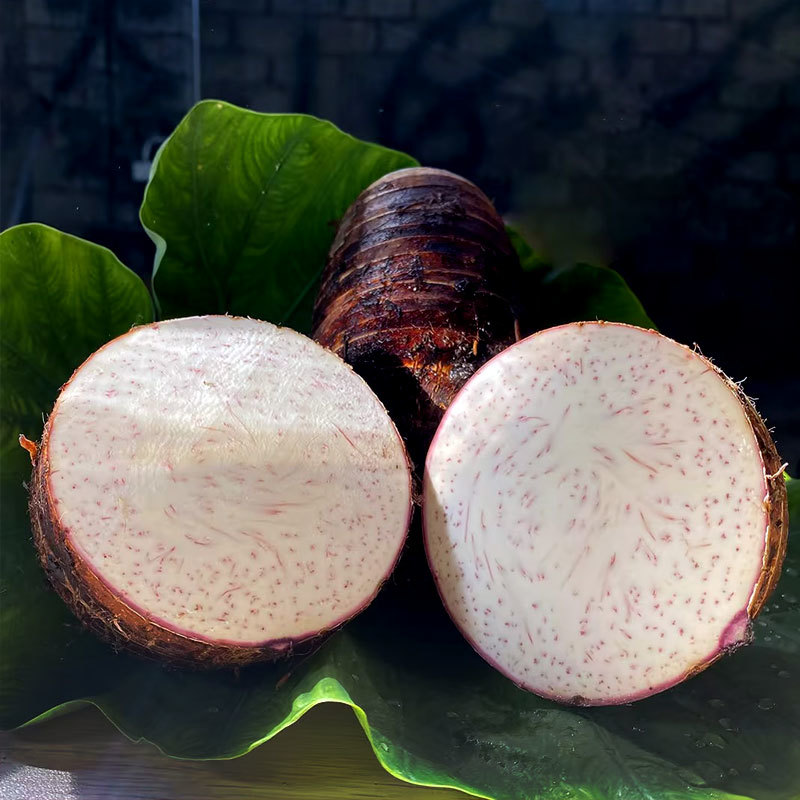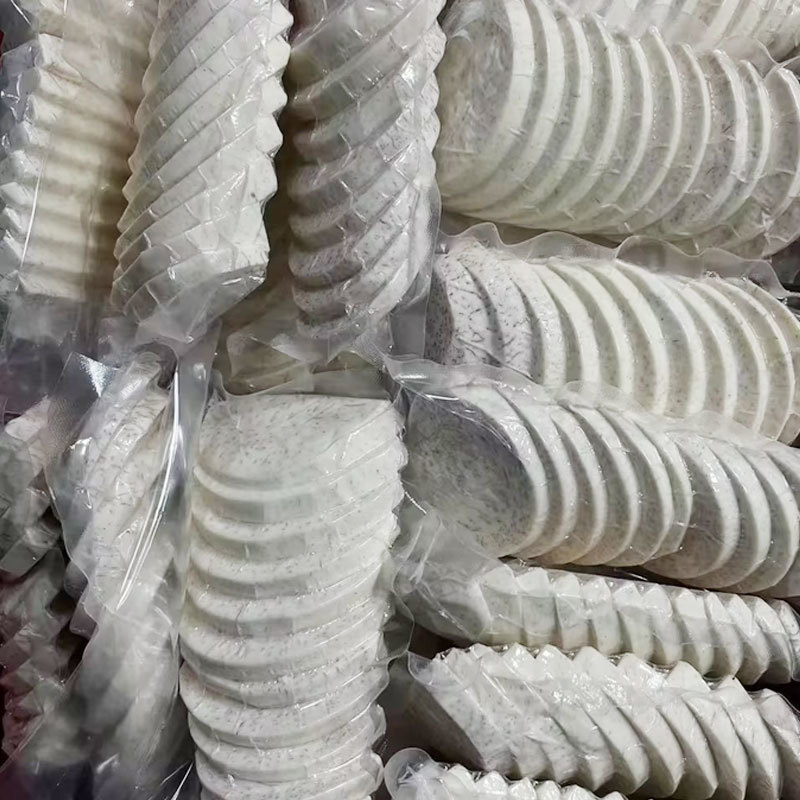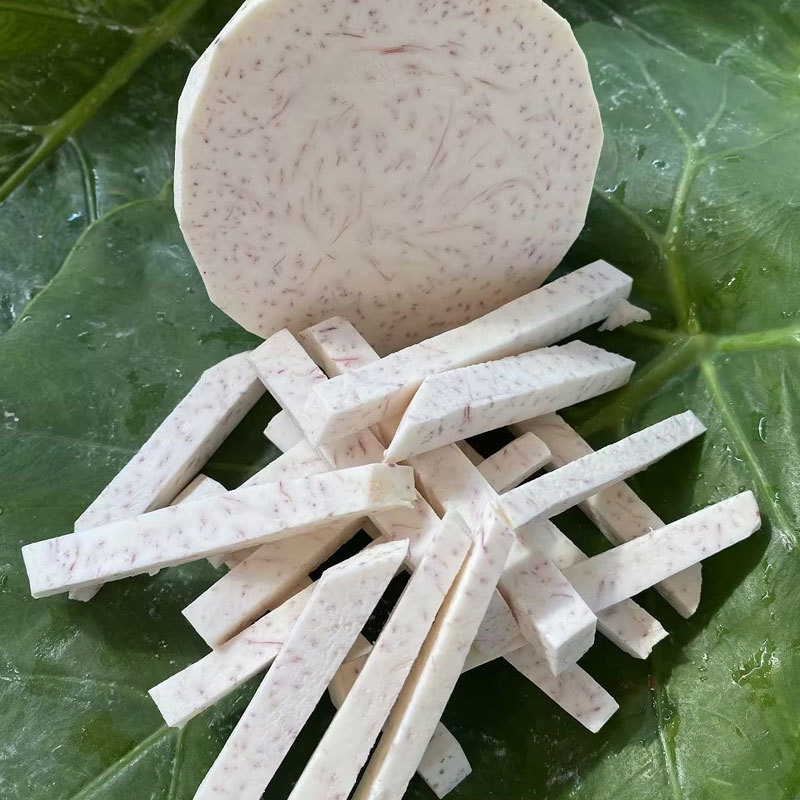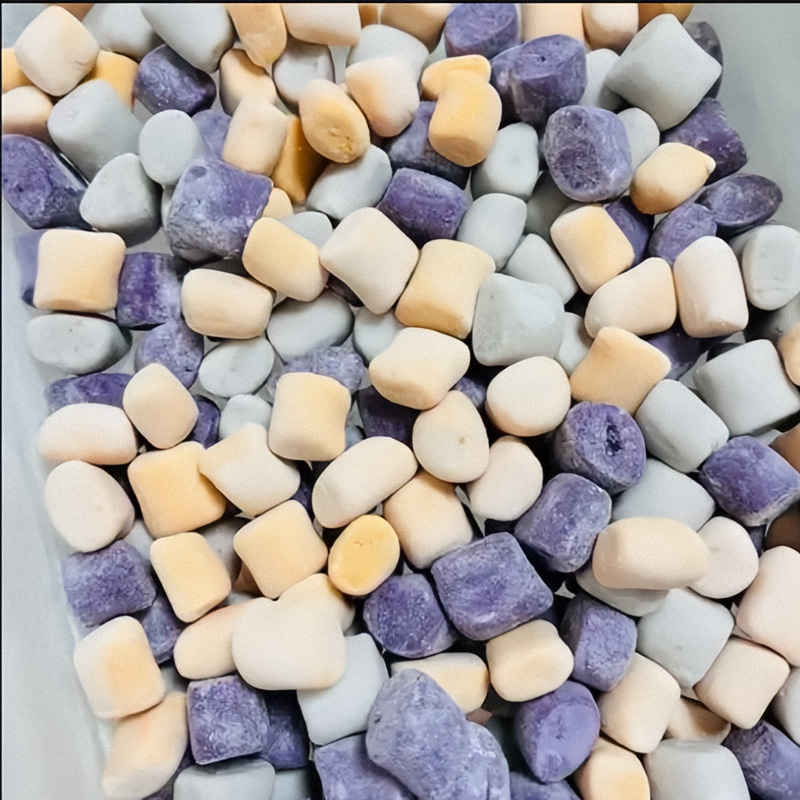
Products
Want to know more product information?
Tel:+86-15078840778
Taro Mud
Product form
Nanning Duotian Agriculture
Lipu Taro
Taro paste, also known as taro paste, is a popular traditional sweet food, especially in Fujian and Chaoshan area has a wide range of production and eating habits. The following is a detailed description of taro products:
1. main raw materials
The main raw material of taro paste is taro, especially betel taro, which is the top grade for making taro paste because of its large size, loose quality and fragrant taste. In addition, the production of taro mud also need to add sugar, cooked lard and other accessories, in order to increase its sweet and delicate taste.
2. manufacturing process
Material selection: Select high-quality betel taro as the main material to ensure the taste and quality of taro paste.
Steaming: Peel the taro and cut it into pieces and steam it in a steamer to make it soft and waxy.
Mashing: Put the steamed taro in a container and mash it into a mud with a tool.
Seasoning: add sugar, cooked lard and other accessories, stir evenly, so that the taro mud presents a sweet and delicate taste.
Molding and decoration: put the taro paste into a bowl or mold, and decorate it with red dates, cherries and other ingredients to increase its beauty.
Classification of 3. varieties
Taro mud products can be divided into various types according to their ingredients and production methods, such as Taiji taro mud and Babao taro mud. Taiji taro mud is made of taro as the main material, with red dates, cherries and other ingredients, showing a unique Taiji pattern; Babao taro mud is added with more ingredients, such as bean paste, candied fruit, etc., and the taste is more rich and diverse.
4. taste characteristics
Taro mud has a dense, soft, smooth, delicate and thick taste, while emitting a rich sweet flavor. It looks cold, but in fact it is hot food. It tastes hot and has a unique flavor.
5. nutritional value
Taro mud is rich in protein, calcium, phosphorus and other nutrients, which can enhance the immune function of human body and prevent cancer and other edible effects. In addition, the mucus protein and a variety of trace elements contained in taro also help to adjust the body's acid-base balance, beauty, and increase appetite.
6. eating methods
Taro puree can be introduced as a final dessert at a banquet, or as a snack or dessert in daily life. It can be eaten directly or with other ingredients, such as adding ice cream and cream to make taro ice cream or taro cake.
7. cultural significance
In Fujian and Chaoshan areas, taro mud is not only a delicious dessert, but also carries rich cultural significance. It is often used as one of the important desserts at the banquet, symbolizing auspiciousness and celebration. At the same time, the production and consumption of taro mud also reflects people's pursuit of a better life and the inheritance of traditional culture.
To sum up, taro paste is a kind of traditional sweet food with rich nutrition, delicate taste and profound cultural significance. Whether it is used as a final dessert at a banquet or a snack or dessert in daily life, it can bring people a pleasant taste bud experience and a good cultural enjoyment.
Recommend products
Message consultation
Get in touch with our team in time, we are happy to help
* Note: Please fill in the information accurately and keep the communication unblocked. We will contact you as soon as possible.



